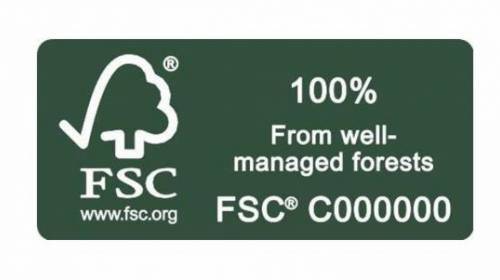A Guide to Sustainable Wood Flooring
June 19, 2025
Homeowners know how beautiful hardwood floors look in a home. Additionally, most homeowners recognize that they can enhance their home’s resale value. But did you know that wood flooring is one of the more sustainable flooring options?
This guide to sustainable wood flooring explains why hardwood flooring is a sustainable option.

Sustainability is a Growing Concern Among Consumers
Sustainability is about meeting people’s needs without compromising the needs of future generations. It focuses on the awareness that our planet has finite resources with the goal of reducing environmental impacts.
So, working toward sustaining those resources is in everyone’s best interest. And studies indicate that we’ve been doing just that as a global community:
- The Global Sustainability Study 2021 found that 85 percent of people globally shifted their purchase behavior towards greater sustainability during the past five years.
- A McKinsey & Co. survey echoes that trend as 66 percent of respondents said they consider sustainability when purchasing.
- According to the Economist Intelligence Unit, online searches for sustainable goods have increased 71% over the past five years.
How Does Sustainability Relate to Flooring Options?
If you’re considering new flooring and committed to sustainability, you need to look at five things for sustainable products:
- Durability: The longer your flooring lasts, the less likely it is to wind up in a landfill. For example, nearly 90 percent of carpeting ends up in landfills. Even luxury vinyl and laminate tile may last longer than carpeting, but millions of pounds of it become waste yearly.
- Recyclability: With a significant amount of flooring ending up in landfills, it’s wise to consider flooring that can be recycled. You could even look for flooring made from recycled materials.
- Indoor Air Quality: According to the EPA, indoor air quality can be up to five times worse than outdoor air quality. Contributing factors include dander, radon, building materials, mold, and cigarette smoke. Additionally, volatile organic compounds (VOCs) affect indoor air quality (IAQ). Many hardwood flooring products—especially those with low-emitting finishes or certified by programs like FloorScore®—emit minimal VOCs, making them a healthier choice for indoor air quality.
- Natural Materials: Natural materials, such as wood or cork flooring, have a lower carbon and embodied energy footprint. Their production emits fewer greenhouse gases that can trap and release heat, affecting climate change. For instance, carpeting typically carries a high carbon footprint.
- Made in the USA: Purchasing flooring manufactured in the USA supports sustainability. If the flooring is manufactured offshore, transporting it to the United States impacts its carbon footprint and sustainability.
Considering these factors, let’s examine the sustainability of wood flooring.
Forest Land Remains Stable in the U.S.
No doubt, your initial concern is that wood flooring production will likely lead to the demise of forests. But hopefully, some of these facts will alleviate that concern.
Roughly one-third of the United States, some 728 million acres, is blanketed by trees. According to the U.S. Forest Service, net annual forest growth in the United States exceeds removals by roughly 40%, meaning that more trees are growing than are being harvested. U.S. forest area has remained relatively stable since the early 1900s and continues to grow in some regions.
For example, the forestry community planted approximately 2.3 billion seedlings in a recent year.
Most importantly, even though hardwood trees can take decades to mature, sustainable harvesting practices help ensure a long-term, renewable supply of wood.
Check out the American Hardwood Export Council’s interactive map. It shows national and regional growth and removals of the main commercial hardwood species.

Wood Flooring is Carbon Neutral
One of the critical environmental concerns is achieving carbon neutrality.
The good news about wood flooring and sustainability: The USDA recognizes that sustainably sourced wood products can contribute to carbon neutrality. Trees absorb carbon as they grow, and the carbon remains stored in wood products, such as flooring, throughout their lifespan.
Carbon neutrality remains intact throughout the wood’s service life. Wood continues to store carbon, whether used in furniture, picture frames, or wood flooring.
Another upside is that wood flooring improves the local air quality in your home. For example, unlike carpeting, hardwood floors don’t harbor allergens, dander, mold, and other pathogens. Therefore, they may help improve the indoor air quality for your family.
Wood Flooring’s Durability Supports Sustainability
Hardwood flooring is incredibly durable, lasting up to 100 years or more. For evidence, all you have to do is walk into a historic property from the 1700s.
A significant advantage of solid wood flooring is its ability to be refinished multiple times. Generally, you can sand and refinish solid hardwood floors at least twice or more. As a result, wood flooring won’t end up in a landfill, unlike many other flooring options.
Compare that to linoleum, laminate, and vinyl, which have estimated life spans of 15–25 years. Carpeting lasts only eight to ten years. As mentioned, these flooring options often end up in landfills.
Domestic Hardwoods Are Even More Sustainable
Using domestic hardwoods, such as ash, maple, oak, and hickory, supports sustainability compared to more exotic species of hardwood.
First, domestic hardwoods can be monitored more proactively than exotic woods from abroad. So, the wood flooring you buy is less likely to contribute to deforestation.
Second, those exotic hardwoods must be imported, which impacts the carbon footprint due to shipping requirements.
Third, although not necessarily a sustainability consideration, domestic hardwoods are typically less expensive than exotic hardwoods. Wood flooring made in the United States is of high quality. Additionally, it helps sustain U.S. workers, another key aspect of sustainability’s goal.

Certifications Ensuring Wood Flooring’s Sustainability
Organizations such as the Forest Stewardship Council (FSC) and the National Wood Flooring Association’s (NWFA) Responsible Procurement Program (RPP) ensure that wood is harvested responsibly to prevent deforestation.
The FSC includes a certification program ensuring products come from responsibly managed forests.
The RPP is a joint initiative uniting environmental groups and flooring manufacturers. It’s committed to producing wood flooring only from environmentally and socially responsible sources. Its goal is to improve forest sustainability for the next generations.
When shopping for sustainable wood flooring, look for products certified by these organizations.
Wood Flooring is Reusable
We already mentioned that wood flooring can be refinished multiple times. This keeps it out of landfills and saves you the hassle of replacing it.
However, another key aspect of wood flooring’s sustainability is that it’s reusable, a critical component of the overall sustainability equation. Consumers view reclaimed wood as trendy. It can be used on walls to add character to a room or even turned into furniture. Even more beneficial is that reclaimed wood doesn’t require harvesting new trees.
Even if wood flooring isn’t reclaimed, it’s a biodegradable product, making it more environmentally friendly than other options.
You Can Count on Bruce® for Sustainable Wood Flooring
Bruce® hardwood flooring is made in the USA. Most trees are harvested in the Appalachian region, where sustainable, native hardwood species are abundant.
Bruce solid hardwood flooring is available in hickory, maple, red oak, and white oak. Bruce engineered hardwood flooring comprises these favorites, as well as other wood species, such as ash, birch, cherry, and walnut.
By the way, engineered hardwood is an even more eco-friendly flooring option. It uses less wood for each plank and often incorporates fast-growing or recycled wood fibers in its core layers.
Explore our DIY-friendly wood flooring online or visit your nearest retailer for our high-quality hardwood flooring.
Sustainability starts from the ground up. Choose Bruce for hardwood flooring that looks good, lasts for decades, and supports a healthier planet.
